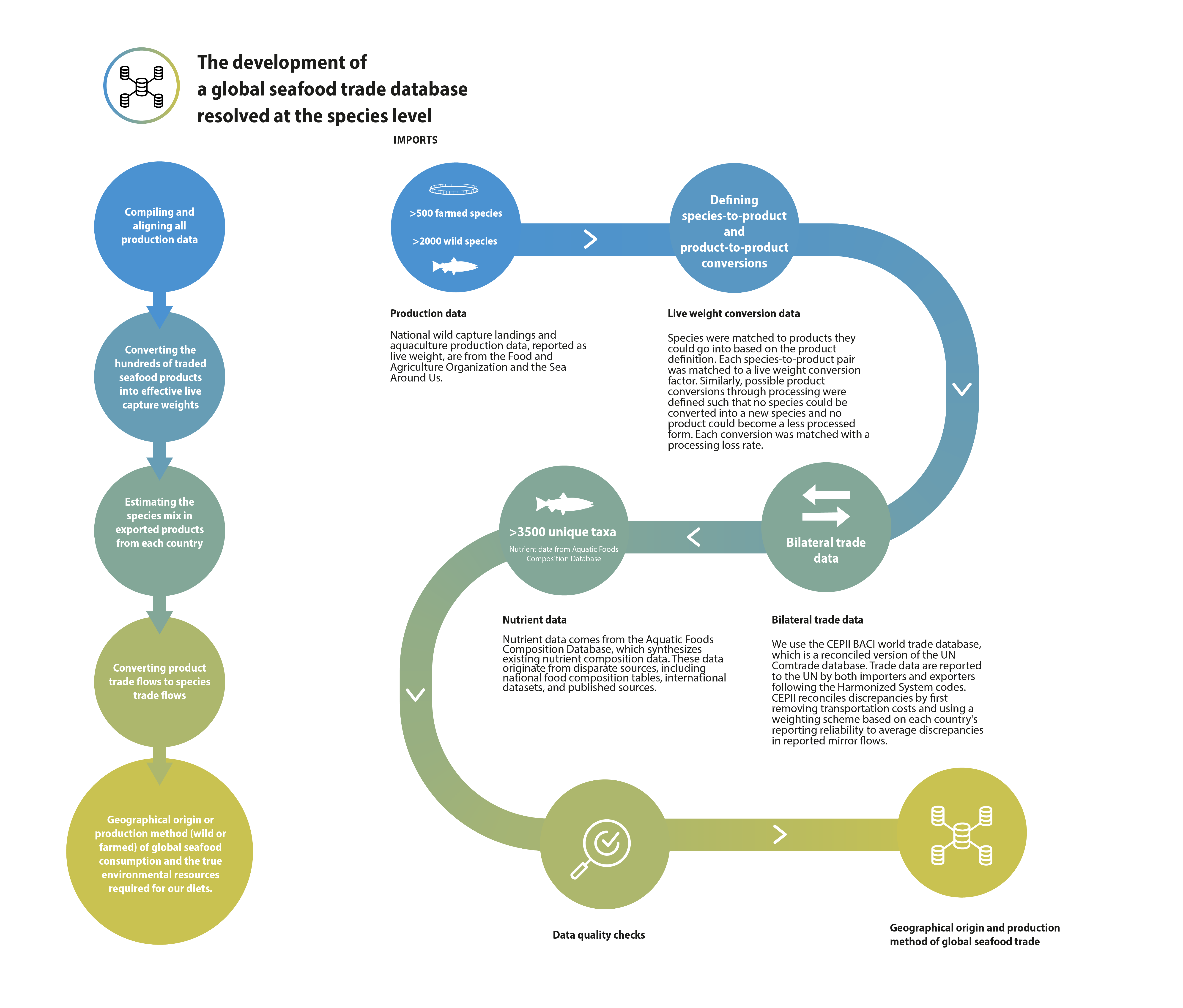Our Model
To estimate the aquatic food species trade network, we compiled and aligned data on fishery and aquaculture production, live weight conversion factors, and bilateral global trade. The data span the globe and encompass decades of changes in country and species names and product forms. Over 4000 live weight conversion factors were compiled and matched to 2000+ farmed and wild capture aquatic species which in turn were matched to 900+ traded seafood product descriptions. Though we include nonfood (e.g., fish meal, bait, and ornamental trade) production and trade in the database, we exclude this from the analysis of aquatic food production and consumption. We also exclude mammals, reptiles, fowl, or seaweeds, along with co-products (e.g., caviar, shark fins, and fish meat) to avoid double counting, from the model and resulting database.
Species trade flow estimates occur in two steps. First, we take a mass balance approach, where each country’s seafood exports must equal the domestic production, plus imports, minus domestic consumption, after accounting for processing losses. For each country, we estimate the proportion of seafood production going into each possible commodity, the proportion of each imported commodity processed and exported, and the domestic consumption of each commodity. We then use these estimates with bilateral trade data to solve for the global species flows. This approach substantially improves upon previous efforts by estimating species-level trade, covering all production environments (marine and freshwater) and production methods (farmed and wild caught), and including the processing and export of imported products.
ARTIS also differs from other available trade databases and models in important ways. Databases presenting reported bilateral trade, such as UN Comtrade, do not include source country and are reported in terms of products which generally obscures the species and production method. Closely related or derived databases, such as BACI, thus have the same issues when trying to understand aquatic food origin and species (see below for more details on reported trade data). FAO also provides bilateral trade data on fishery products, with products at a greater disaggregation than what the 6-digit Harmonized System offers, though this still does not provide sourcing or full species/production method information and the data is currently only available back to 2019.

